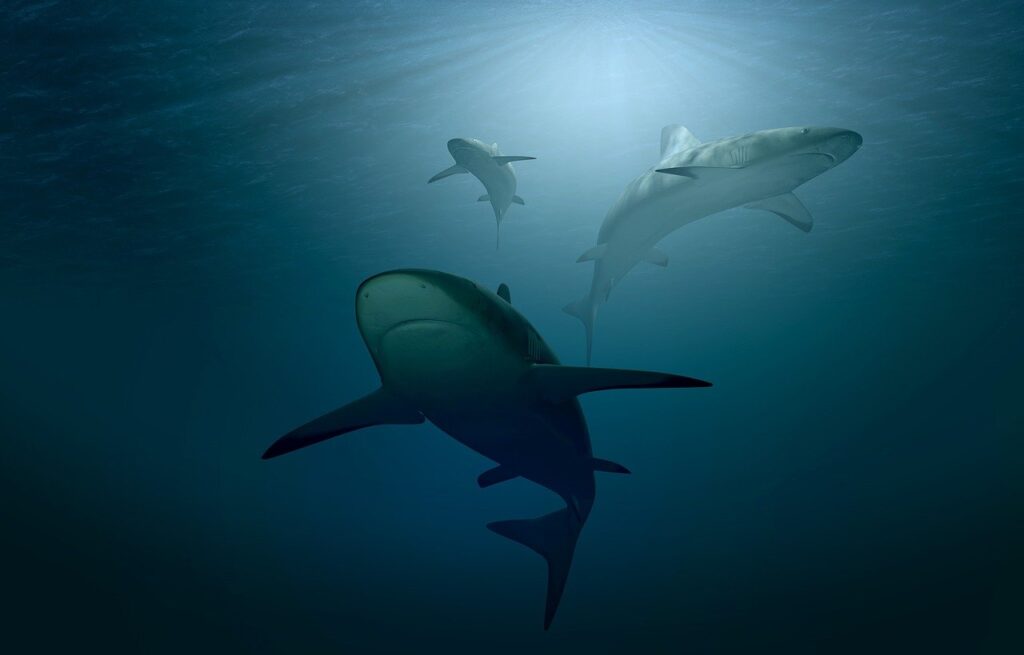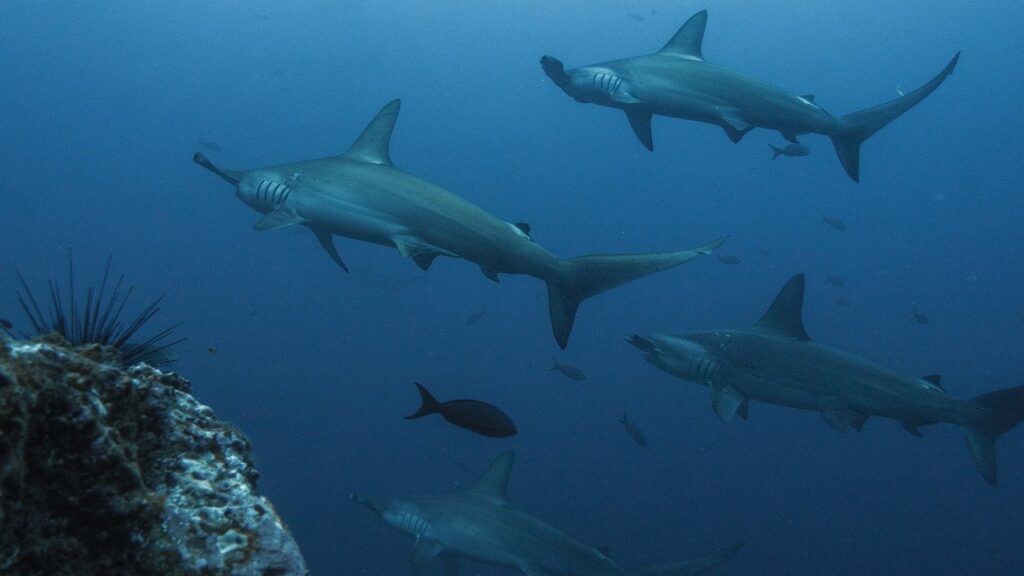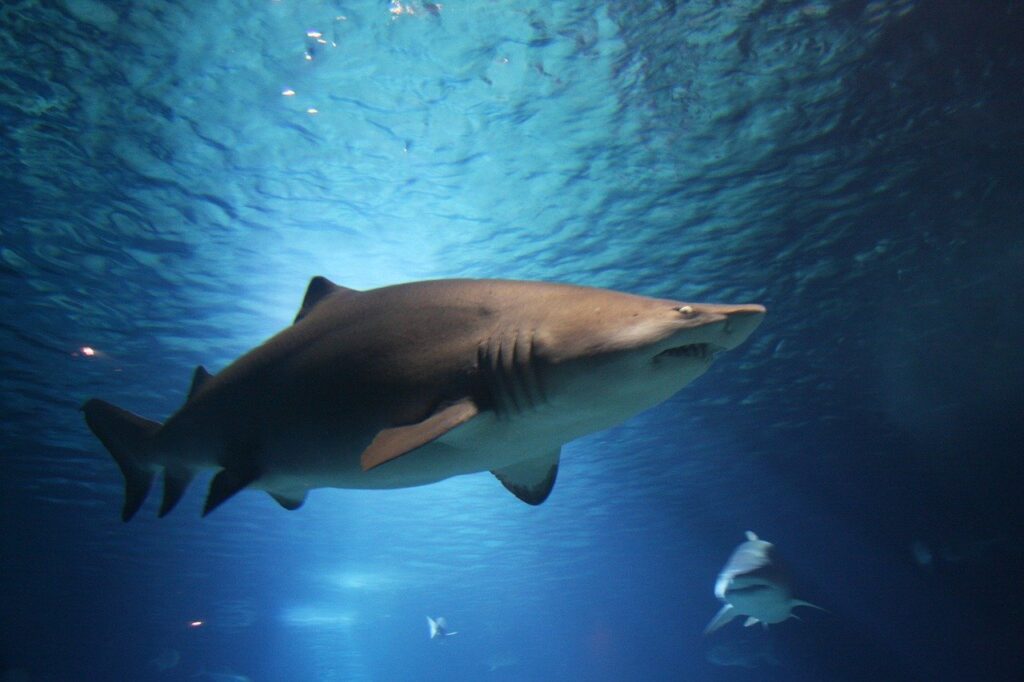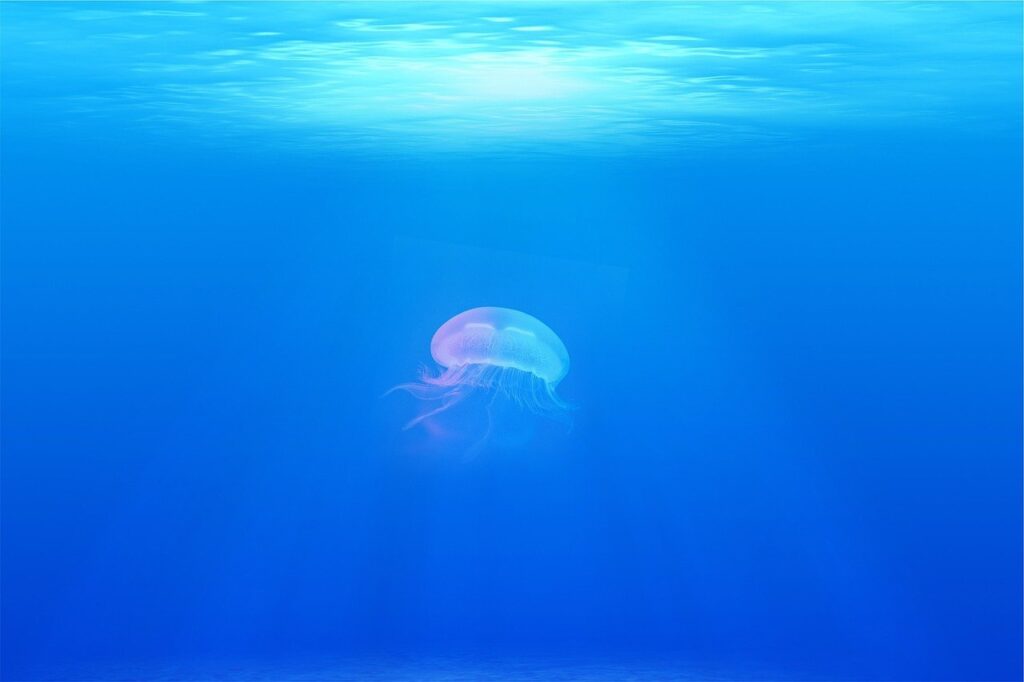
Multiple beautiful Greek Islands with gorgeous seas and beaches all over them… but should you be feared swimming in those clear waters? Let’s take a ‘deeper’ look at the fear of sharks and other creatures of the sea while diving and enjoying the Greek waters.
Sharks do reportedly exist in Greece and they come in different species but most types appear to be harmless. Shark attacks have been a thing for a long period not only across the Greek Islands’ shores but in the Mediterranean as well. Sharks only appear in the deep water and for that reason, the attacks seem to be rare and it’s very unlikely that you will encounter a shark during your visit to Greece.

So, sharks do in fact exist in the Mediterranean, but around the area of the Greek Islands, there has been a lack of shark’s appearances. All shark species are rare in Greece, and those that are occasionally seen or caught on tape by either tourists or locals are usually from less-dangerous types. In recent years (2017-2019), different kinds of sharks have been caught around various Greek Islands like Crete, Milos, and others.
In the last 170 or so years, there have been reported 15 attacks, which means 1 attack every 12 years. Given a large number of people spending their vacation in the warm waters along the shores of Greece, encounters with sharks are few. In the existing records of shark attacks in the Mediterranean, there is only one case of a fatal shark attack in the Greek Islands, and that was reported nearly a century ago.
Shark Species In The Mediterranean
There are about 47 different species of sharks living in the Mediterranean. The Great White Shark which probably is the most dangerous shark species is among them, but their sightings are very rare. There have been 5 reported cases of shark attacks near Greece in which the shark was a Great White Shark. Some of the other species that have been seen around the Greek shores and are considered dangerous are the following:

- Oceanic Whitetip Shark
The Whitetip Shark is a large pelagic requiem shark inhabiting tropical and warm temperate seas. This species of shark just passes through Greek waters mainly under the Island of Crete. Its stocky body is most notable for its long, white-tipped, rounded fins. It is important to mention that the Oceanic Whitetip Shark is a critically endangered type of shark.
- Shortfin Mako Shark
This type of shark can reach a size of 4 meters in length but in Greek waters can only be found as a smaller and younger shark reaching a maximum of 1.5 meters in length. It is commonly referred to as the mako shark and can live up to 30 years. The species is classified as Endangered.
- Basking Shark
The Basking Shark is the second-largest living shark and is listed in plankton-eating shark species. Adult sharks typically reach almost 8 meters in length. The basking shark can be found in all the world’s temperate oceans. It is slow-moving and has a brownish color. The species is classified as Endangered.
- Blue Shark
The blue shark is a species o requiem shark, that inhabits deep waters in the world’s temperate and tropical oceans. This type of shark visits the Greek shores and can be found in larger numbers around the Mediterranean. The Blue Shark in the Mediterranean are adults and for that reason can reach up to 3.5 meters. Although there haven’t been any Blue Shark attacks reported this type of shark is considered the most dangerous in Greek waters.
Articles Recommended:
When And Why Do Sharks Attack
There is no clear evidence that sharks hunt humans, according to scientific studies. If you think about it, a human is a piece of fresh meat that swims much more slowly in relation to fish. And for sharks, that’s easy prey. Shark attacks have a pattern in the majority of recorded attacks. Let’s analyze that pattern below.

Sharks approach quietly without warning. They “hit” in three ways. In the first, most common, the shark can see the swimmer’s foot, think of it like a fish, and bite it, before realizing that it is not his usual food. The shark then vanishes leaving the person to bleed. The first clue comes in the pattern that most shark attacks take.
The second way is much more serious. The shark stabs the victim, testing whether it is worth it to “hit” and then unleashes multiple attacks against the person in danger, cutting off a limb or damaging the person fatally.
Lastly, the third way is to attack like a snake: the shark is in the right place to find its prey, it’s time to eat (dusk, usually). The prey is the right dimension. The person looks like a big fish to the shark.
With shark attacks, it seems like usually the shark has come for his favorite food and found the human instead, so hungry as he was he attacked the human instead. The sudden attack and the victim’s struggle to escape have a special charm for the shark.
For those who don’t want to be in the bad position to meet a shark, experts advise that one way to get rid of its teeth is to hit it either in the gills or in the eyes. Experts advise to avoid swimming at dusk or dawn, also avoid dark waters. Wearing dark clothes and avoiding jewelry is another way to protect yourself from sharks.
Where In Greece Is More Likely To Spot A Shark
Sharks have existed and have been recorded since ancient times in both the Ionian and the Aegean Sea. Although there are indications for the burial under Mount Athos in Chalkidiki as a place where sharks give birth, they like to travel constantly so they go anywhere they can find their favorite food, seals.
So sharks are more likely to be spotted in places where there are seals, such as Alonissos, Serifos, and Zakynthos. Also, there are reports of Great White sharks across the shores of Chalkidiki, Volos, Mykonos, Kerkyra, and more.
Articles Recommended:
What You Should Worry About in Greece – Not The Sharks
Sharks usually prefer swimming in larger open seas and oceans so seeing a shark in Greece during a short duration visit is highly unlikely. But many more dangers are lurking on greek shores. The ‘dangers’ you might encounter while on a Greek Island include:
Jellyfish stings especially during August when the jellyfishes are storming through Greek waters. Some of the jellyfish species appear to be dangerous and can without a doubt end your vacation prematurely.

Scorpionfishes are also another danger that lurks on the Greek shores. It is very important to wear sea sandals at all times as the scorpionfish’ stings have been known to be fatal.
Additionally, stepping on a needle-spined sea anemone barefoot or coming across sea urchins can be dangerous as well especially if swimming near rocks.
To conclude, in Greece, you are more at risk of drowning or being hit by a speedboat, than being attacked by a shark. So, enjoy your vacation in Greece and if you see a shark, you should probably feel lucky and not scared.
